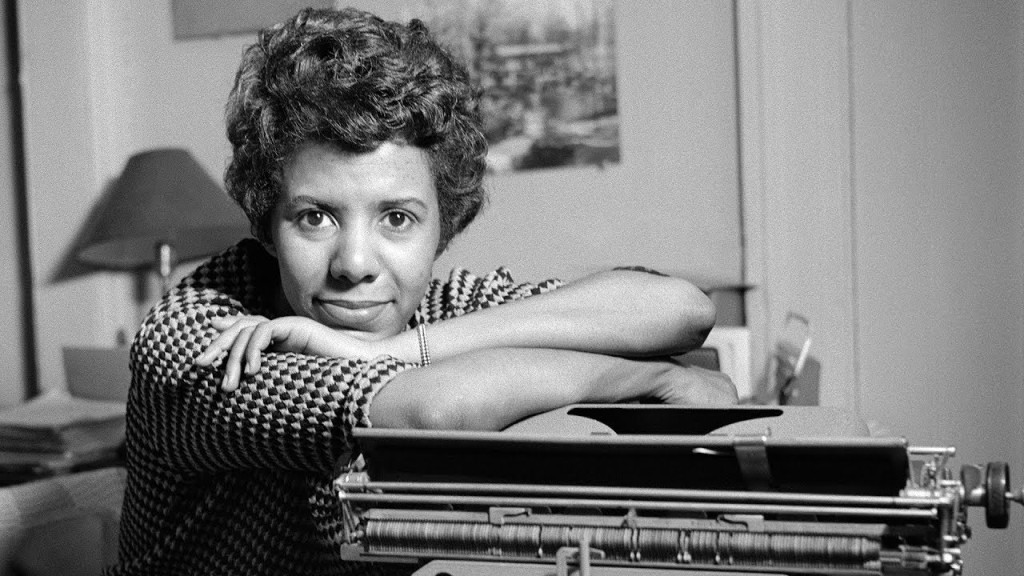 It seems odd at first that the “American Masters” (PBS, 9 p.m. ET, check local listings) tonight on the playwright Lorraine Hansberry seems longer than the film last week on PBS about James Baldwin.
It seems odd at first that the “American Masters” (PBS, 9 p.m. ET, check local listings) tonight on the playwright Lorraine Hansberry seems longer than the film last week on PBS about James Baldwin.
After all, Hansberry wrote just one play of significance in her short life: the enduring 1959 “A Raisin in the Sun,” which made her a cause célèbre at the age of 27 when it became a hit on Broadway.
More than that, she was the first African American female to have a play produced for Broadway. And if you want to check some more boxes, she was in an interracial marriage and was bisexual. Before she embarked in playwriting, she was quite a successful journalist and a lifelong activist.
In clips from the past by filmmaker Tracy Heather Strain, Hansberry she was quite an intoxicating figure exchanging ideas and smoking cigarettes on on the kind of TV talk shows that seems to have disappeared today. But she also had cancer that cut her life and output short, dying in 1965 at the height of the Civil Rights movement she championed and in which she played some key roles. She was only 37.
Strain’s film moves through Hansberry’s life in which her spirit and intellect guided her to be a woman of many firsts. Her play, named after a line in the poem “A Dream Deferred” by Langston Hughes, was one of the first to provide a real look at the struggles of black households trying to succeed in America in the mid-20th century.
Using a working class vernacular and cutting to essence of economic hardship in a country where race is so prominent, “A Raisin in the Sun,” with a cast that included Sidney Poitier, Ruby Dee and Louis Gossett Jr., it electrified audiences. Not only was it one of the first plays with a predominantly black cast on Broadway, it was the first to have been directed by a black director, Lloyd Richards.
Hansberry went on to write the screenplay for the 1961 movie version which reprised the original Broadway cast. Yet she struggled when writing a follow-up play.
Strain had access to journals and home movies and spent 14 years making the film, whose full title is “Lorraine Hansberry: Sighted Eyes/Feeling Heart.” Even with all of that access, though, some things about Hansberry remained a mystery.
“I was kind of surprised I didn’t get answers to some of her feelings about some major issues,” Strain told reporters at the TV Critics Association winter press tour earlier this week. “I thought when I got to her diaries I know more of a lot of her interior life.
“She talked about her friends,” she said. “But I thought I would find a story about something about James Baldwin or Nina Simone, because everyone asks about those two, and I didn’t find anything like that in there.”
When “A Raisin in the Sun” opened in New York, it was not clear that it would be successful, Gossett remembered. Audiences were silent when the curtain closed, but only because “they were so stricken with what the ensemble had done,” he said. Then came the thunderous applause and more than a dozen curtain calls. “It was as if it was a flop for about a good 10 seconds. And then, poof.”
As it was for the investors in the play, participating in Raisin was a bit of a risk for Gossett, he said.
“I had just finished trying out for the New York Knicks in the Catskills, and that was my choice: either go with the Knicks or be part of A Raisin in the Sun.
He made his choice and not only enjoyed a decades-longer career, he said, “I still have my knees.”
I asked Strain why Hansberry’s anticipated followup did not do as well.
“I spoke to Lloyd Richards about her ‘The Sign in Sidney Brustein’s Window,’ and he talked about the fact that, for ‘A Raisin in the Sun,’ they really workshopped it. They’ve worked on it when the they worked on it in New Haven, they worked on it in Philadelphia, and they worked on it a lot when they went to Chicago before they were brought into New York, while they were waiting for a theater,” Strain said.
“’The Sign in Sidney Brustein’s Window’ did not get that kind of attention. It also was kind of a troubled production. It had three different directors, and Robert Nemiroff and Burt D’Lugoff, great friends of Lorraine’s — supporters, her ex-husband — but they weren’t seasoned theater producers.
“There’s a piece in her diary where she discusses that ‘the boys are doing the best job that they can,” Strain said.
Besides, all of that, she added, “She’s sick. She’s also she’s not around, and so I think there was a, kind of, confluence of issues that made the play challenging for some audiences.”
Strain says Hansberry’s future would have been bright and there were a lot more plays she was working on.
“She had a play called ‘Laughing Boy’ that was about a Native American. There was a play based on a [Charles W.] Chestnutt novel that she wanted to do. She wanted to do something about Mary Wollstonecraft. She wanted she just had she had a lot of things that she wanted to accomplish. So it’s hard to say what would have been completed, but she had very ambitious plans, and she also had an unfinished novel.”
“Working today,” Gossett said, “she could just blossom with that incredible mind.”